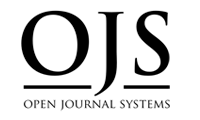Space Syntax Analysis as tool to develop Sustainable Tourism: The Case of Garli, a hamlet in Kangra district, Himachal Pradesh, India
Main Article Content
Abstract
: Human settlements have evolved through ages to arrive at the complex mechanisms they display today in terms of spatial metamorphosis. However study of spatial characteristics, are important as they signify strategic parameters for augmentation and rehabilitation of human settlements and help to identify key issues for transformation. Space syntax analysis is an approach to understand spatial characteristics through a set of analytical, quantitative and descriptive tools in different forms like buildings, cities, interior spaces or landscapes. (Hillier and Hanson, 1984, Hillier, 1996)The present paper aims to understand and implement a set of analytical and descriptive approaches to Space Syntax analysis to identify the most appropriate pedestrian walkway for sustainable tourism development in the context of a Himalayan hamlet, Garli in Kangra district of Himachal Pradesh
Building awareness about environmental degradation and the depletion of its resources was first identified in the report “The Limits to Growth” by D.L. Meadows and “Man and His Environment” by U'Thant that was published in the late 60s. These became the foundation for international discussions on sustainable development (Sustainable tourism Development, Ivona Niedziolka)
In the early 1970s the first United Nations (UNEP) Conference on the Human Environment chaired by UN Secretary-General took place in Stockholm. It produced an action plan for the environment based on the global environmental assessment programme called Earth-watch, highlighting Environmental management activities and International measures to support the National and International actions of assessment and management. (Cooper, Fletcher, Fyall, Gilbert, Wanhill, 2008).
It was increasingly realized that the massive environmental degradation inflicted by tourists needs to be reduced and the concept of sustainable tourism became popular which encourages tourism with minimal environmental intervention.
The present paper aims to understand the basic principles of space syntax analysis considering spatial cognition through the knowledge of axial map, integration, choice and distance measures and applying this theory to delineate the most usable pedestrian walkway as a part of sustainable network, culminating in a route for heritage walk for tourism development plan. The most integrated pathway was selected after considering the connectivity value, mean depth value, control value and accessibility.
Article Details

This work is licensed under a Creative Commons Attribution-NonCommercial-ShareAlike 4.0 International License.



